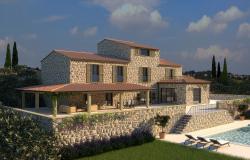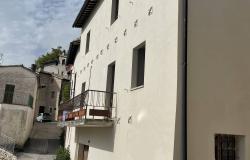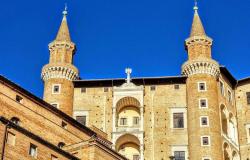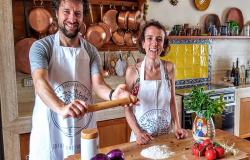We are so squeamish about what we eat, but the Italians are not. There, culinary traditions reach back to the poverty food which is all but forgotten in the Anglo-Saxon world. Italy generally welcomes dishes made from the cheapest ingredients, like offal or tripe, or made from animals we don’t regard as edible; horses and donkeys, for instance.
Brains are a delicacy all over Italy. In Rome, the Carbonara in Campo dei Fiori serves lambs’ brains cooked whole, and presented in the foil in which they have been baked. Elsewhere, brains are deep-fried, looking like scampi, but with a rather different texture and mild flavour.

In the Veneto there are tripe festivals and competitions which help to keep local traditions alive. In the Euganean Hills, five local restaurants compete by each serving their own speciality tripe dish on a different day of the week. Customers are invited to sample them all and vote which is the best. Competition is fierce. One trattoria offers folk music with the unlikely pairing of a trumpet and an accordion. Another has large amplifiers with country and western music until midnight. Each in turn tries to outdo its rivals by appropriating half the street, putting temporary hedges in the road to accommodate more tables, then building small platforms where the live performances will take place. And the prize? Just the title, the trattoria which serves the best tripe in the area.
Pasta in donkey meat sauce is also a speciality of this part of Italy, though curiously,I’ve yet to see a donkey in a field here. The dish is so localised that they only refer to the donkey meat in dialect, musso.
The town of Saonara and its surrounding area, east of Padua, is well-known for rearing horses for their meat. The fields are full of horses, and the local trattorie advertise menus of all permutations of horsemeat dishes.

The Trattoria Al Bosco is the most celebrated of these traditional eating places, so much so that it is recommended in the Slow Food Guide. It is a lovely 19th century villa with several indoor rooms with tables, as well as a huge outdoor eating area under a shady leafy pergola. The menu is curious, full of dishes which it is virtually impossible to translate. Your antipasto might be horsemeat salami or prosciutto, or sfilacci, a dish which looks rather like a messy bird’s nest and is dried and fried thin strands of horsemeat. Then there are nervetti, nothing more than strings of gristle, but served with beans and onion to make a tasty first course. Horse stews, colt entrecote and colt steak tartare are all on the menu as recommended secondi piatti.
Nothing is wasted. As they say of the pig, when they’ve produced all the blood puddings, terrines of cheek and snout, and trotters vinaigrette, you eat everything but the squeak!














